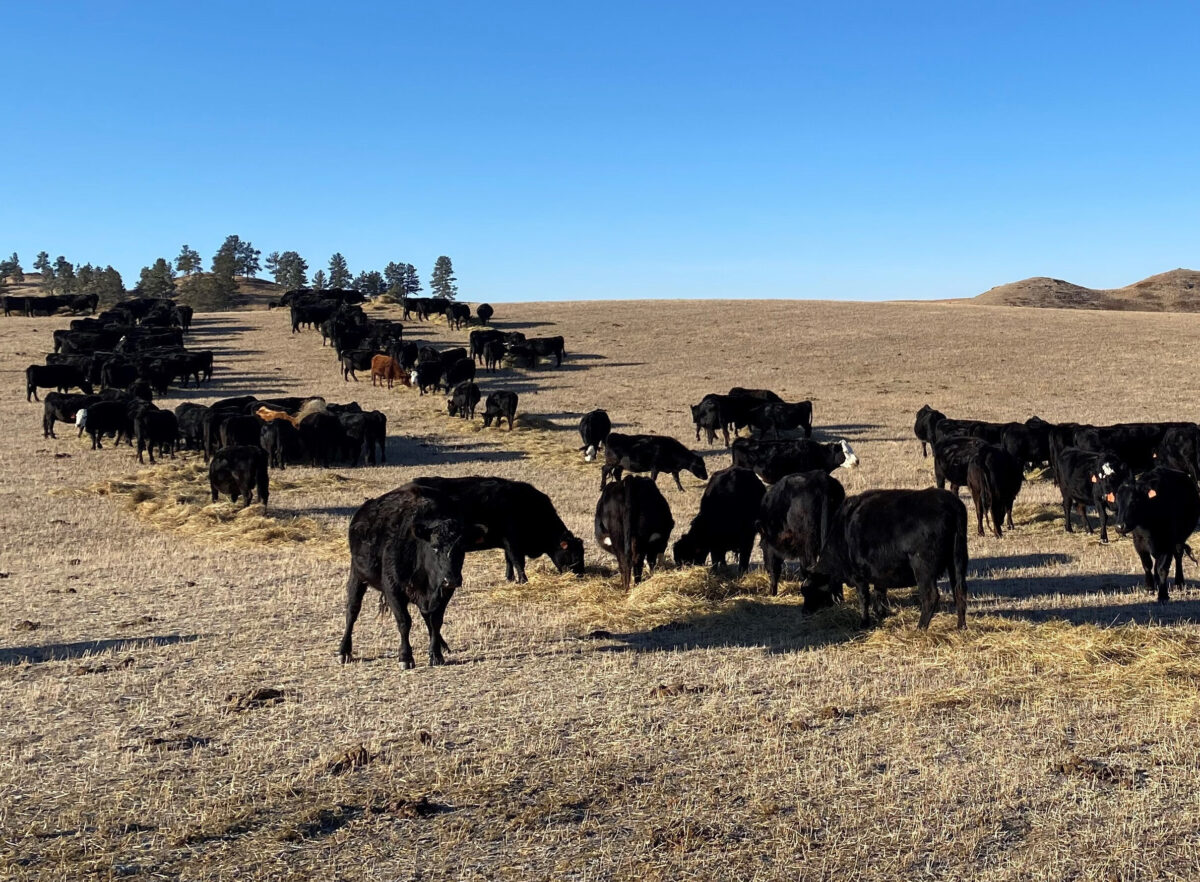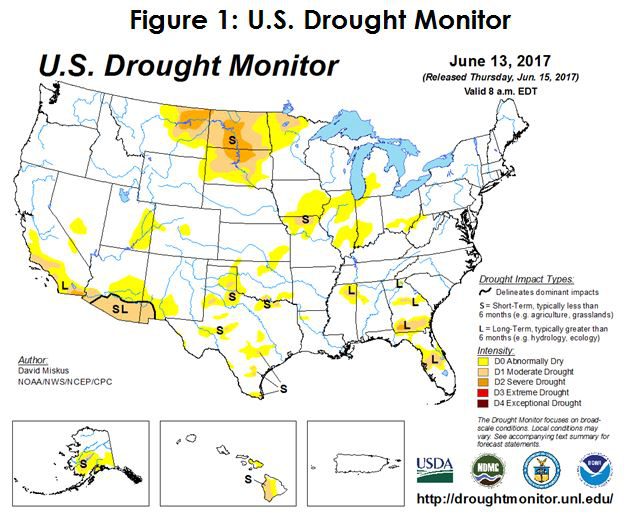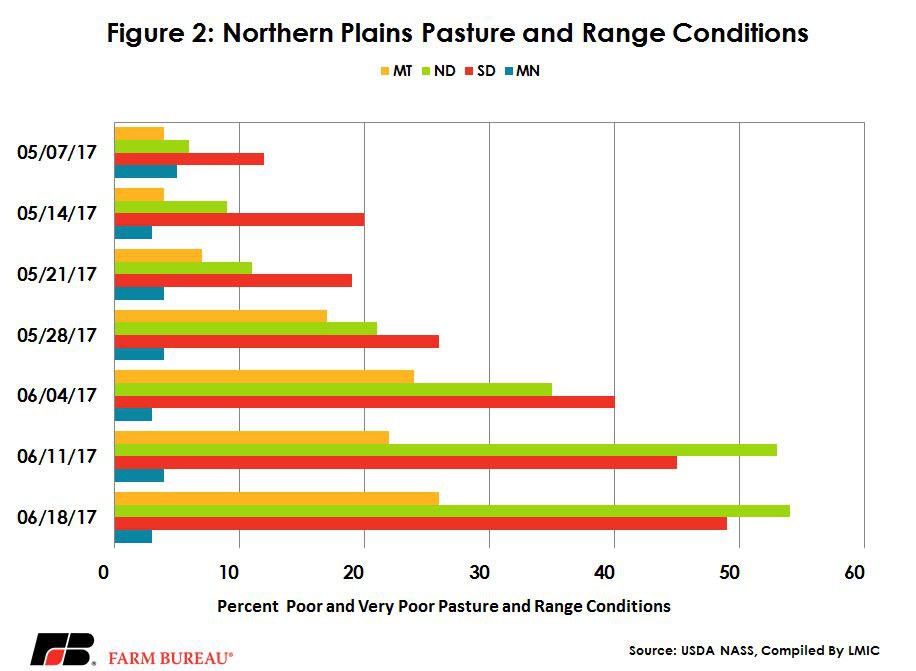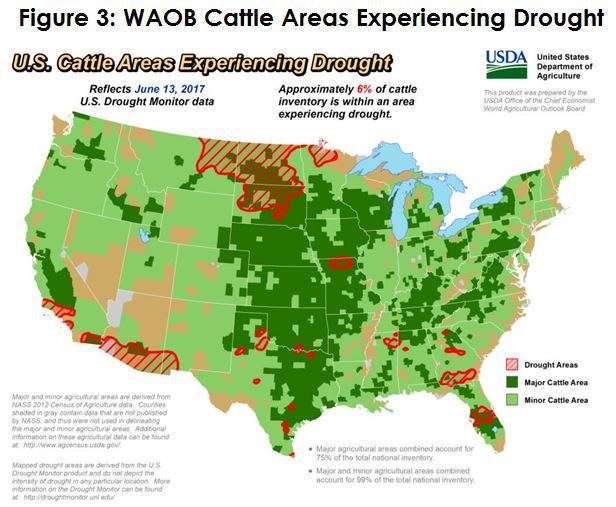Northern Plain Drought Accelerates, Placements Head South
AFBF Staff

photo credit: Montana Farm Bureau, Used with Permission
The grazing season is underway and although the national picture looks good with 63 percent of the pasture and range in good-to-excellent condition, trouble spots are starting early in the northern plains. University of Nebraska-Lincoln’s U.S. drought monitor shows that the wet spring alleviated many areas of drought, and is more favorable than previous growing seasons. However, over the last month, dryness has spread across the Dakotas, northeastern Montana, and northern Minnesota, figure 1. Over 25 percent of North Dakota is in a state of severe drought, while the remainder of the state is moderately dry to abnormally dry. In South Dakota, over 75 percent of the state is in some level of drought, while pockets of dryness also exist in Montana and Minnesota.

The drought monitor indicates that the effect is short- term and conditions can improve with rains, however, it’s already affecting cattle movements. Pasture and range conditions are estimated on a weekly basis in USDA’s Crop Progress Report. It ranks feeding conditions based on the level of supplemental feeding required. For these four states, pasture and range conditions have deteriorated rapidly very early in the season. Figure 2 shows this year’s grazing conditions as a percent of land requiring supplemental feeding. The result has been that some cattle are coming off grass and moving to feedlots in Nebraska and will continue to do so if grazing conditions warrant. These cattle are being placed much earlier and at lighter weights than anticipated. The northern plains is a key cow-calf producing region of the U.S. and, according to the World Agricultural Outlook Board, as much as 6 percent of the cattle are located in an area affected by drought, figure 3.


USDA’s Cattle on Feed report will be released on Friday, June 23. Pre-report estimates indicate very large placements during May 2017, in the range of 6.5 to 14 percent higher than a year ago. Marketings are still expected to be aggressive, continuing the trend over the last several months. The average trade estimate puts marketings up 8.8 percent. This placement number and the weight breakdown of those placements are factors to watch in the May and June numbers to get a feel for the effect of the northern plains drought.
The cattle industry’s focus has been on the large number of Mexican feeder cattle coming across the border. USDA data in May showed imports were 54 percent higher than the previous year, or about 31,400 head. However, the increase analysts are expecting is closer to 2 million head more cattle placed into feedlots than last year. And with the decline in cattle imports from Canada, it’s hard to see how those trade flows will result in the vast increase expected. Further, the southern plains grass conditions have held strong, which will likely drive Mexican feeder cattle to grass-based programs. The uptick in placements is likely a much larger picture, driven by high profitability in feedlots bidding cattle out of the southern states. Large southern plains placements are going to be driven by economic factors, rather than drought-induced as they are in the northern plains.
The northern plains drought could play a role over the balance of the year, providing a flow of lighter-weight cattle into the feedlot pipeline and maintaining availability of animals. The intensity and the length of the drought will define how large of a role that is. On the other side, ample supplies continuing to trickle in from the northern plains could pressure lightweight feeder cattle prices lower that region.
